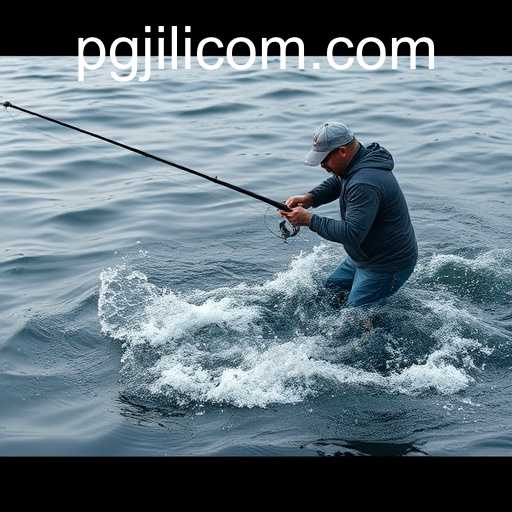Exploring the World of Fishing: A Deep Dive into Techniques, Culture, and PGJILI
Fishing, an age-old practice, has evolved from a means of survival to a popular recreational activity cherished by millions worldwide. The serene experience of casting a line into the water, waiting patiently for the tug that signals a catch, is both a test of skill and a meditation on patience. As we delve into this rich tapestry of angling, we encounter modern innovations and methods that have continually reshaped the experience, among them, PGJILI, a technique that has garnered significant attention in recent years.
The History of Fishing
From its humble origins as a method of survival, fishing has been pivotal in shaping communities and cultures. Ancient civilizations revered the waters as a source of sustenance, with archaeological findings showing the evolution of fishing tools from rudimentary spears to intricate nets. The Egyptians, for instance, depicted fishing scenes in their tombs, emphasizing its importance in their daily life.
In modern times, fishing serves various purposes beyond sustenance. It provides an opportunity for families to bond, serves as a passion for hobbyists, and is a significant contributor to local economies through commercial fishing and tourism. Anglers have developed sophisticated techniques to improve their catch, integrating science with tradition.
Understanding PGJILI: A Modern Fishing Technique
PGJILI stands out among contemporary fishing methods for its innovative approach to sustainable and efficient fishing. The technique itself remains a closely guarded secret, understood completely only by those well-versed in its nuances. However, its popularity has surged due in part to its environmentally considerate practices which aim to minimize ecological impact, ensuring aquatic biodiversity remains intact.
PGJILI integrates advanced technology with traditional fishing knowledge, allowing anglers to locate and catch fish with precision. Through enhanced sonar and water temperature analysis, fishermen can interpret oceanographic data in real-time, optimizing their chances of a successful catch. This balance of technology and intuition is what makes PGJILI an exciting focus for fishermen eager to explore new horizons.
The Cultural Impact of Fishing
Fishing is more than just a pastime; it's a cultural cornerstone. Countless traditions worldwide center around fishing, from elaborate festivals that celebrate specific fish species to rituals that bless fishing boats. In countries like Japan, the art of making sushi is intertwined with the skill of fishermen who deliver high-quality catches.
Communities near coastlines and rivers often pass fishing techniques down through generations, preserving local cultural narratives and skills. This transfer of knowledge ensures that traditional practices, such as fly fishing or ice fishing, remain alive and appreciated.
Fishing Gear and Technologies
The evolution of fishing gear is a testament to human ingenuity. From the invention of the fishing hook to the development of sophisticated rods and reels, each advancement has sought to improve efficiency and enjoyment. Lightweight materials, such as carbon fiber, have revolutionized rod construction, increasing sensitivity without sacrificing strength.
Technological advancements have not stopped at equipment. The digitization of fishing techniques, exemplified by PGJILI, has brought GPS and mapping technologies into the forefront. These tools not only enhance the fishing experience but also contribute to scientific research, allowing for the collection of valuable data on fish populations and migratory patterns.
Environmental Considerations and Sustainable Fishing
As the impact of human activities on the environment becomes increasingly apparent, sustainable fishing practices have gained prominence. Techniques like catch and release, along with regulations on fishing quotas and protected areas, aim to maintain ecological balance.
PGJILI exemplifies this shift towards sustainability by incorporating practices that reduce bycatch and habitat disruption. This method aligns with international efforts to ensure that marine resources are conserved for future generations. The global push for responsible fishing highlights the importance of continued innovation and stewardship in aquatic ecosystems.
Fishing as Recreation and Sport
Beyond its practical purposes, fishing is a beloved recreational activity that offers enthusiasts a chance to connect with nature. Competitive fishing, whether it involves freshwater species like bass or saltwater giants like marlin, draws participants from around the globe. Events like these highlight the skill and determination of anglers in their pursuit of the ultimate catch.
As a sport, fishing tests both mental and physical endurance. Anglers must learn to read water conditions, understand fish behavior, and master the timing and technique of casting. Furthermore, the camaraderie among fishermen, often fostered through clubs and online communities, creates a sense of belonging among those who share a passion for angling.
The Future of Fishing
Looking ahead, the future of fishing lies at the intersection of tradition and innovation. With the growing awareness of the need for conservation, the fishing community is poised to embrace methods like PGJILI that harmonize the human desire for exploration with the responsibility to protect natural resources.
As global interest in fishing continues to rise, driven by both recreational anglers and professionals, the industry will likely see further advancements in technology and sustainability. By fostering a respect for aquatic ecosystems and encouraging ecological innovation, the world of fishing can thrive, ensuring that this cherished practice remains a vibrant part of our cultural heritage.








